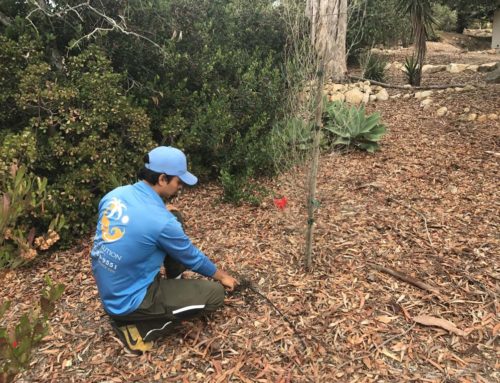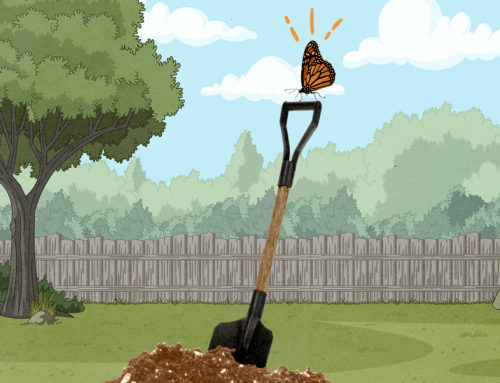How to be Waterwise with an Automatic Irrigation System
During times of drought and watering restrictions, it may be tempting to turn off your sprinkler system completely and just hope that the lawn and plants will survive. But newer irrigation systems possess technology that make watering much more efficient, mitigating the excess water that can be lost to evaporation, wind, and overspray. And as plants are good for pollinators and can play a part in reducing pollution, keeping your living landscape healthy is likewise beneficial to the environment. Even an older sprinkler system can be evaluated for efficient watering, as it ought to be!
Water for the weather. It can be embarrassing, but many of us have had the experience of discovering our sprinklers running in the middle of a rainstorm. If you can equip your controller with a rain sensor, do so. The sensor will help your system know when conditions are dry and thus prime for watering, or when it should hold off. Likewise, note the season and consider if natural rainfall will take care of a lot of the watering for you.
Water at the appropriate time. Water can be lost to evaporation in the middle of the day when the sun is hot and drying. At night, too, quickly cooling temperatures can slow percolation, leaving water to sit on the lawn overnight and encouraging mold growth. The best time is usually first thing in the morning when the sun and temperatures strike the right balance for efficient watering.
Hire professionals to install
Drainage systems. More than hundred of satisfied clients.
Don’t water the pavement. This may seem obvious, but it’s worth checking each zone during a routine watering to make sure the spray stays where it belongs—on the grass and plants. Do this check on a windy day, too, to see if the prevailing wind patterns are sending water off site.
Avoid overwatering. In that same vein, look at how the sprinklers interact with each other. While some overlap (about 40% of the arc) ensures even coverage, wayward sprays can overdo it in some areas and leave other areas dry. Check for debris and broken heads that can send water flying in the wrong direction. And finally, ask your irrigation specialist if the sprinklers have matched precipitation rates in each zone, too. Rotors mixed with sprayers can leave some areas dry and others overwatered as they put out water at different rates.
The right tool for the job. Irrigation system manufacturers offer a dizzying array of sprinklers and irrigation system types, but for good reason. Various parts of the landscape require watering in different forms. From rotors for large expanses of lawn to bubblers and drip systems for small gardens, it’s best to consider whether the system is putting water where—and only where—the uptake by plants is optimal.
While there are several things you can do to improve the efficiency of your irrigation system—a move that will save you money as well as doing your part to save the planet—your local landscape contractor is likely a specialist in irrigation systems as well and can suggest upgrades to your system that will make watering your landscape just right for your wallet and the environment.






Leave A Comment
You must be logged in to post a comment.